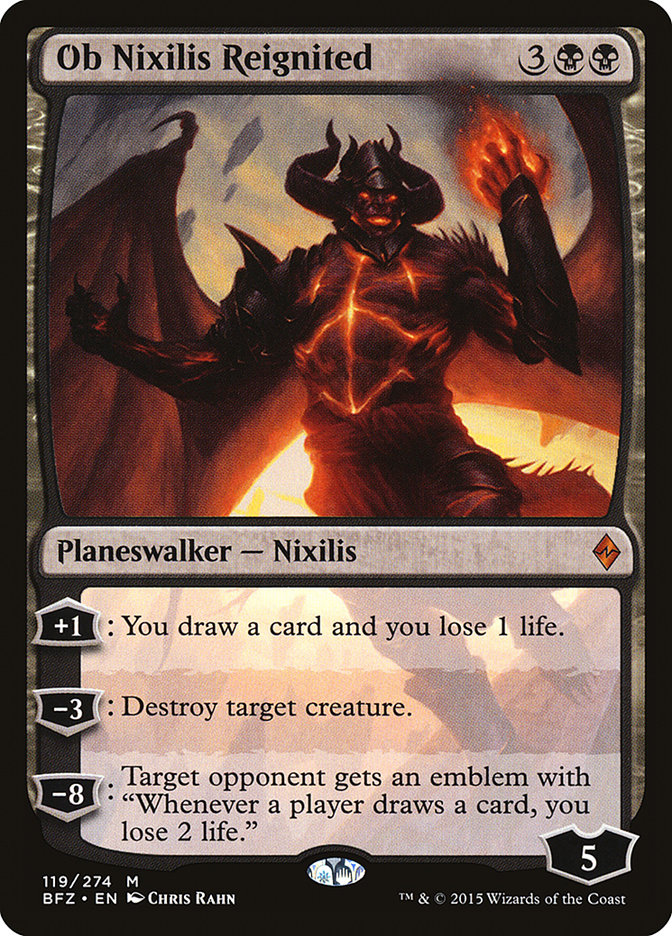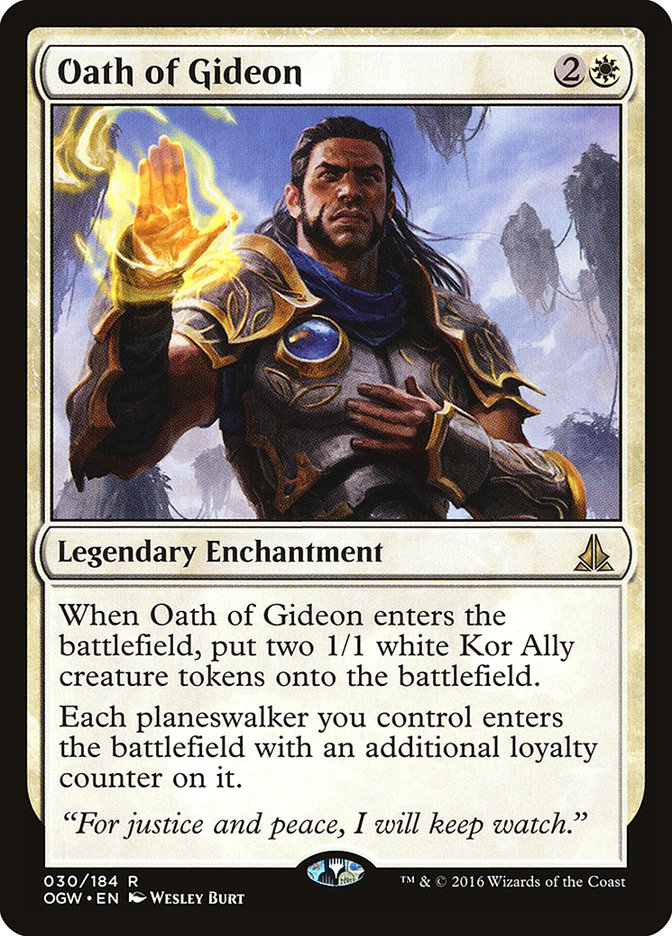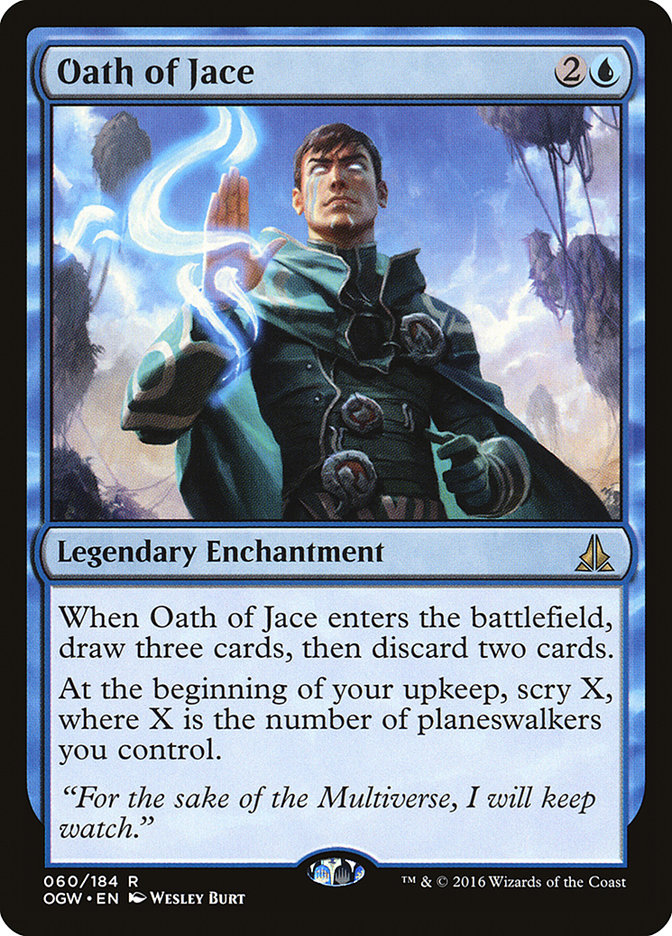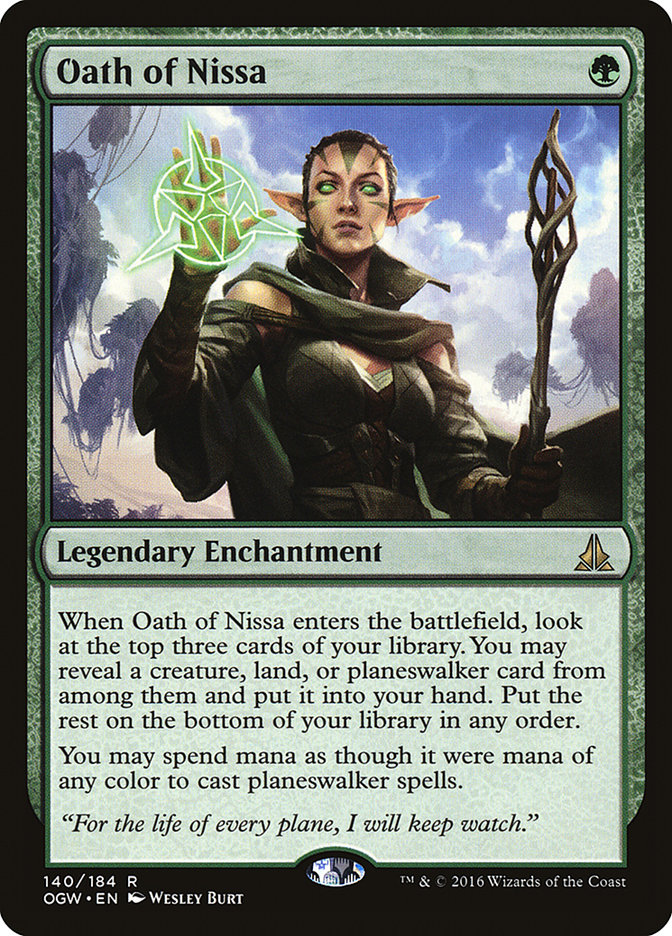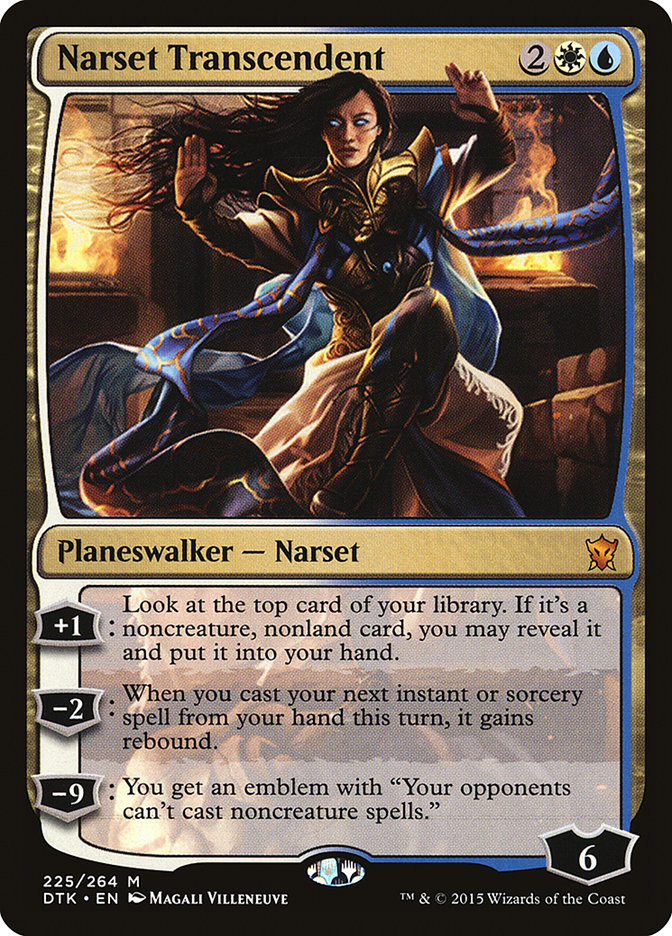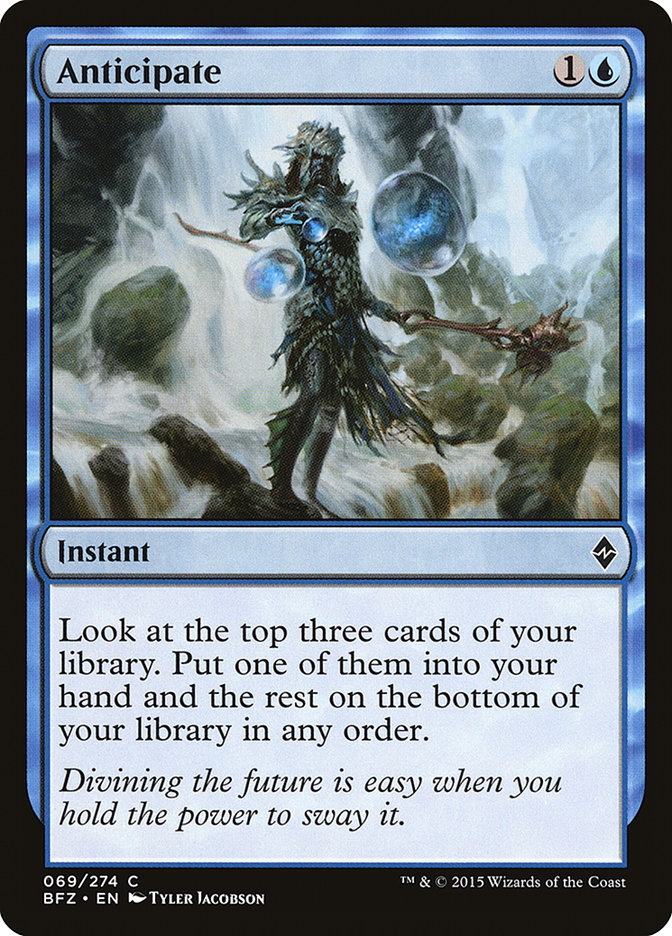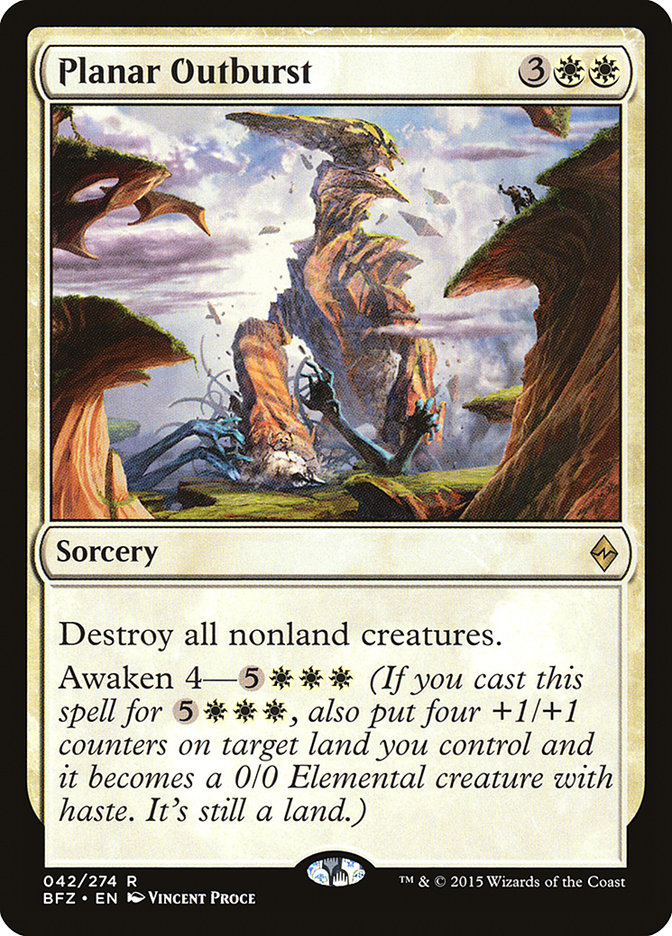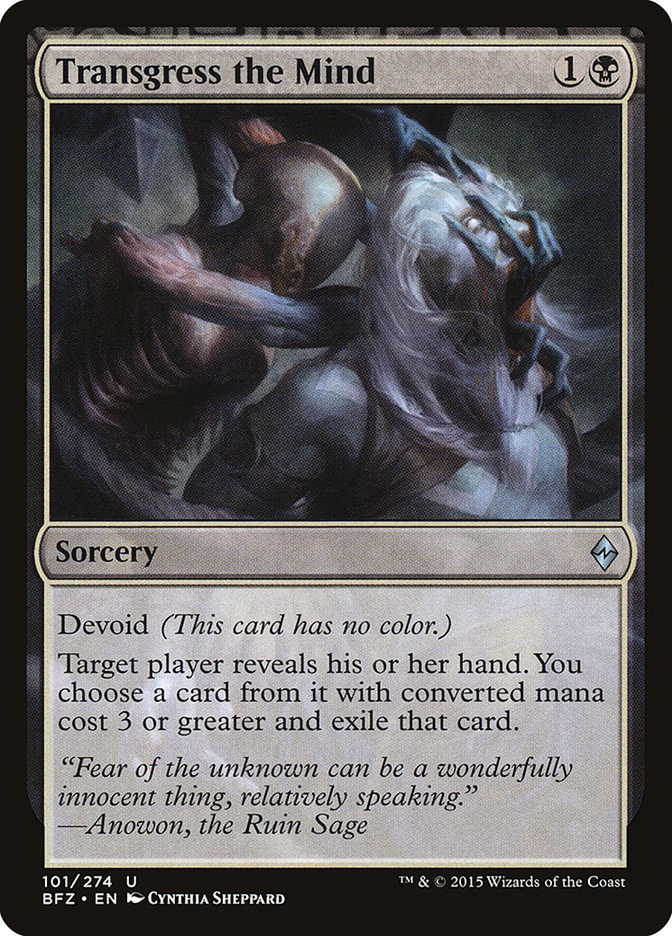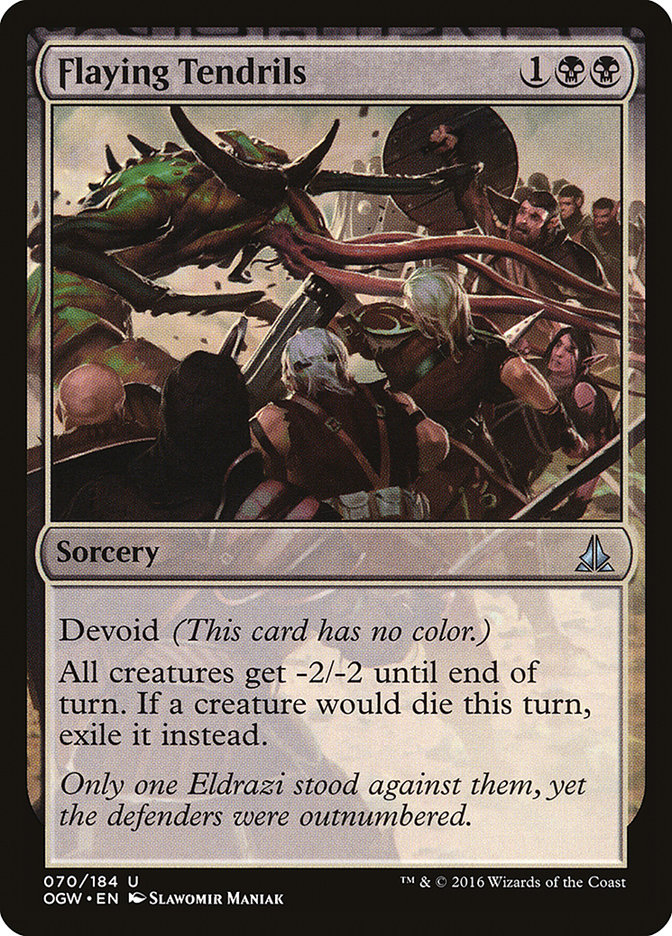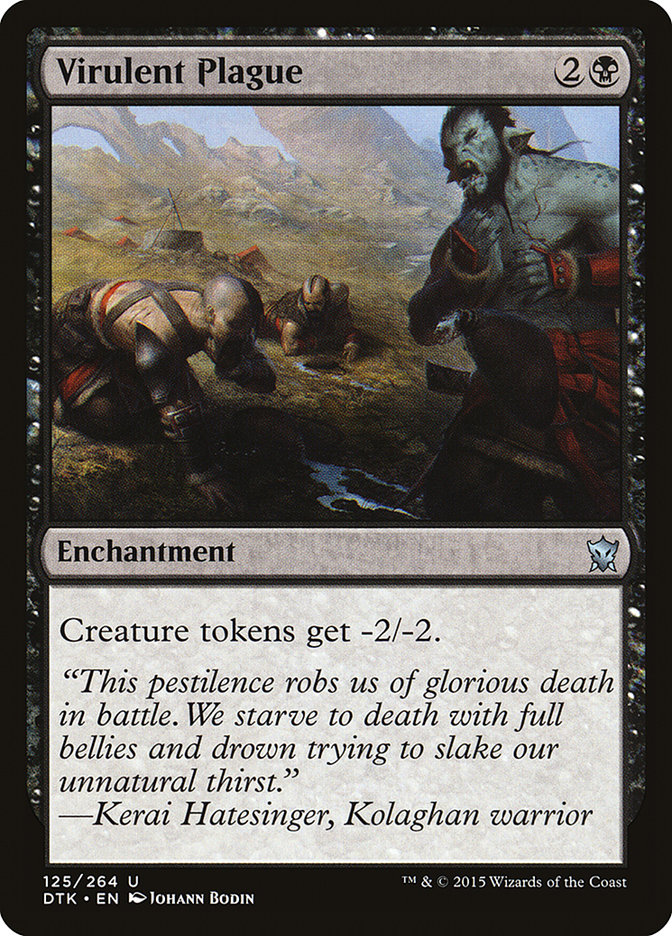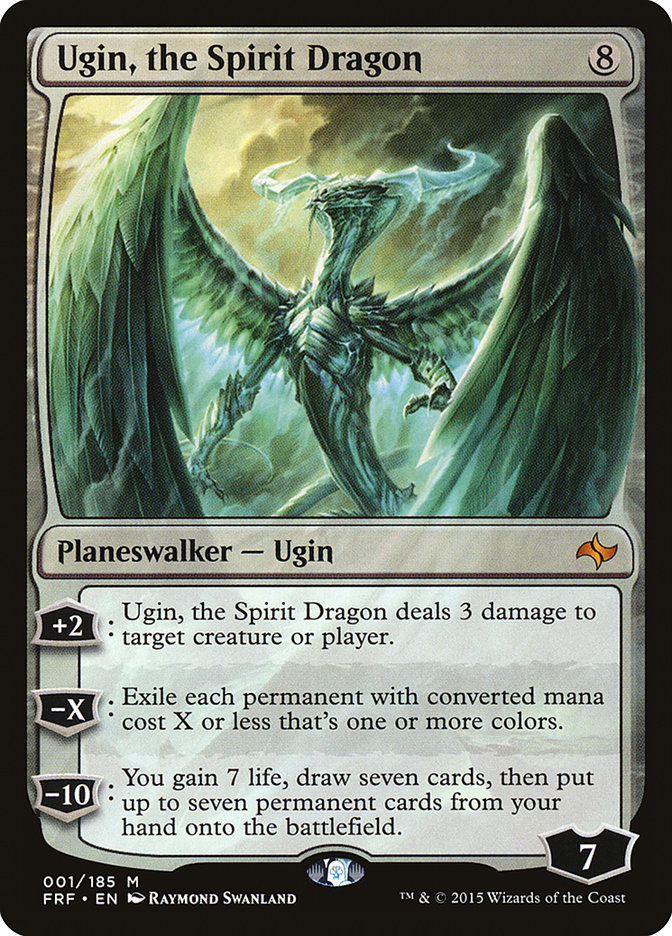While several planeswalkers rallied to the cause of defending Zendikar from almost certain doom, one broke away from the pack, wreaking destruction after regaining his planeswalker spark. Now nearly absent from the conclusion of the story of Zendikar, Ob Nixilis still had a chance to leave his mark.
Last week, we talked about the Oath enchantment cycle from Oath of the Gatewatch.
The Oaths each provided flavorful, unique design and functionality points, but if you’re paying attention, you’ll note that there are only four Oaths. The supplemental printing of Ob Nixilis of the Black Oath hints that he, at one time, was on their side, but at least for the moment, that Black Oath is missing. From a development perspective, this leaves a gap in the five-card rare cycle that must be completed.
Enter Remorseless Punishment.
This card epitomizes the relationship that every demon has with its prey: a fate that they alone choose. The conundrums presented in Remorseless Punishment are standard fare for beings with an infernal streak. Indulgent Tormentor gave us this option as recently as last year; it’s almost like they have a habit of putting unwitting mortals into impossible predicaments.
On the downside, cards like Remorseless Punishment do give their opponent a choice, so a sharp player can choose the least painful path. Got lots of life? Take a hit! Got a grip of nonsense? Toss it! Army of tokens? No problem! Remorseless Punishment continues to suffer from this same ailment, so how do we fix it?
When I started to brew this deck, I considered going the mono-removal path: Duress, Murderous Cut, Crux of Fate, the whole nine layers….err, yards. Rip all the good cards from their hand and obliterate their creatures. Then, when they can’t lose anymore, cast this five-mana sorcery and hit them where it hurts!
As I plotted out decks in this vein, though, they all seemed really boring, linear, and unoriginal. Not to mention, if they have no hand or creatures, literally anything can kill them. You’re under no pressure at all and you have plenty of time to do cool stuff. In short, Remorseless Punishment was a win-more card, interchangeable with nearly any control win condition. It seemed ineffective and uninteresting, two words I do not want to use to describe a brew.
So as we abandon Ob Nixilis Reignited’s home color as its core, where do we go next?
First, let’s make it clear that all of Remorseless Punishment’s modes are good. If you cast it every turn, your opponent will lose. It’s the fact this is a one-time sorcery that makes it poor. Any of these modes, repeated over several turns, will cripple your opponent. I considered a self-mill deck that contained Jace, Vryn’s Prodigy; Den Protector; and Remorseless Punishment as a way to cycle it over and over. This proved irritating, as it required Jaces, and I couldn’t find a list where the Punishment was at the center. Then, plain as day, it smacked me right in the face.
Narset Transcendent! Narset, a planeswalker that might place in the contest for most counters on a four-mana planeswalker behind Gideon, Champion of Justice, sees very little play despite her powerful functionality. She makes instants and sorceries, both underpowered types as of late, way more powerful, drawing them with her plus ability, copying them with her minus ability, and preventing your opponent from casting them when she ultimates.
For Remorseless Punishment, she is right on curve, allowing you to plus her on turn 4 and -2 her on turn 5 for back-to-back Remorseless Punishment. Dealing with one is usually okay, but two puts them in a real bind. Together, against an unarmed opponent, it’s just lethal.
This puts us firmly in Esper. We can play Ob Nixilis Reignited right alongside Narset Transcendent. Setting up other cards that work well with Narset Transcendent in a defensive shell, we can build a tap-out control deck that’ll make them pay.
Creatures (6)
Planeswalkers (5)
Lands (26)
Spells (23)

Creatures
Like any control deck, our creature count is light, but we’ve got the right players for the deck’s needs. Reflector Mage is really nuts; more than anything, good decks are tempo-oriented, even if not in the typical way. Reflector Mage is a huge tempo swing, and it’s just the right size for the manabase. Three mana is the sweet spot for this deck; casting a two-mana spell into a three-mana spell without spending any permanent resources is the key to getting ahead in this deck.
Tasigur, the Golden Fang, on the other hand, slides alongside a second spell for a given turn. His ability to delve allows us to cast a planeswalker then him as a way to protect our investment, or to apply pressure after sweeping away the battlefield. His activated ability is one of my favorites, and here, it’s always getting removal, a planeswalker, or a way to draw cards. You can’t go wrong!
Spells
Narset Transcendent and Ob Nixilis Reignited are our only noncreature permanent spells. Narset works best with instants and sorceries, so they comprise the rest of the deck. Ob Nixilis Reignited is a great value engine, and late in the game he can win things for you outright.
This leaves 23 instants and sorceries to manipulate our hand and the battlefield. Anticipate, a card that’s been lost alongside control decks in Standard, is so critical for building a good hand without giving up tempo. I ain’t playin’ no Jaces, but honestly, I kind of like Anticipate better anyway.
It does what Jace can, albeit once and at instant speed. More importantly, I ain’t buying him. That’s why I’m justifying Anticipate.
Immolating Glare is a card I’ve really wanted to try, and its only home really is in a control deck. Two mana answers any targetable attacker, and that feels particularly powerful right about now, when people are sending huge prowess creatures, Eldrazi, and huge Dragons across the table at me. Just deal with it.
Painful Truths is the real engine that keeps our hands full. We’re defensive, so the life loss is less relevant, and even with a full grip, you can discard the cards you don’t need during your cleanup step. Remorseless Punishment feels critical enough as a win condition to sport three in the deck. Planar Outburst offers another win condition, clearing the battlefield and creating a creature for the low price of eight mana. This is another great rebound with Narset, letting you sweep the battlefield twice to clean up manifest creatures, Hangarback Walker tokens, and other stubborn creatures.
Dark Petition is a cute one, allowing me to find and cast Remorseless Punishment for seven mana, and it’s great to copy with Narset too, though you must use the free mana during your upkeep. The other singletons represent corner cases or potential tutor targets for the Petition.
Lands
You might notice a particularly budget feel to the lands, and this is intentional. As we get ready for Shadows over Innistrad, we need to let fetchlands go, and this deck aims to test a manabase without the fetching fixers. This mana base is rotation-friendly, and now’s the time to test the numbers to see if it works.
Sideboard
Infinite Obliteration continues to be an excellent choice against Ramp and combo-oriented Rally the Ancestors decks, and it’s really fun with Narset Transcendent. If you rebound it, you’ll know the majority of their hand and you’ll know exactly what to name next! Negate and Duress are a bit generic, but I don’t mind Duress as a rebound target for Narset Transcendent.
Transgress the Mind is a great combo with Reflector Mage. You can bounce a creature, they can’t recast it, and then, once you untap, you can pluck it away! It’s a little slow, but it’s a reliable way to blow away a problem creature. If you’ve got some breathing room, you can’t beat Utter End for spot removal. The singletons include variations and corner cases.
Flaying Tendrils and Virulent Plague are similar, but I like one of each to try them out. Sphinx of the Final Word protects my spells both pre- and post-Narset and is otherwise very tricky to kill outside of sweeps and sacrifices. Planar Outburst is expensive, but sometimes, you just want another one. Silumgar’s Command, meant to go along with the maindeck Ojutai’s Command, provides a nice reactive spell that can work well at sorcery speed with Narset Transcendent.
This deck came together quickly, and I tried it my local shop for four rounds of Magic.
In Round 1, I came across the dream opponent, G/W Megamorph. This creature-centered deck plays right into my manipulation. Immolating Glare shone through as a huge winner, stuffing Dromoka’s Commands mid-combat and smashing up Wingmate Rocs attacking my planeswalkers. I managed a Narset Transcendent emblem in Game 3, and with fewer and fewer relevant creatures, I locked up the match.
In Round 2, I played against a rough matchup: G/B Manifest. This deck produces small, incidental threats that manifest upon death or benefit my opponent when they die. Whisperwood Elemental is particularly nefarious against my deck. Nevertheless, I outmaneuvered him long enough to resolve a rebounded Remorseless Punishment. An Ob Nixilis emblem and Shambling Vents finished the job, while Reflector Mage played a critical role using both its power and toughness and its trigger.
Round 3 was rougher: Temur Ramp. This counter-heavy matchup saw my opponent resolve back-to-back Ugin, the Spirit Dragon and Ulamog, the Ceaseless Hunger, and he crushed me handily both games. In a third game just for fun, I resolved all three Infinite Obliterations and all of my Transgress the Minds, plucking every creature from his deck. Still, his two Lumbering Falls beat me to death shortly before I stabilized. With only nine cards left in the deck, I had a Tasigur, the Golden Fang and one more Remorseless Punishment left with which to kill him.
I played a fourth round against my friend’s Bant Company list and, well, I just couldn’t touch him.
Two wins, two losses. Not stellar, but unlike some other decks I made, I know where I made my mistakes, and I could clearly see the plan for improving it.
First of all, Immolating Glare is still conditional removal, but it’s really solid conditional removal. It’s not right for every deck and every situation, but there are a surprising number of times where it’s exactly what you want. Reflector Mage was also excellent. In a control shell, Reflector Mage buys critical time to develop your planeswalkers and your hand.
Dark Petition was also a really nice tool to have in the singleton department, allowing me to pull from a large pool of options. Anticipate also really surprised me, reminding me of the old Think Twice days where you could keep a loosey-goosey two-lander and a Think Twice to recover. This lets you look at two more cards in place of Flashback, and that’s a price I’ll pay.
However, the deck lacked significant pressure, thus reducing the effectiveness of Remorseless Punishment. It felt great to cast, but it needed just a bit more power behind it to break through and really open up a game. There were way too many Painful Truths because I often had plenty of cards but I didn’t have the life to spend. I overestimated the amount of life this deck can gain, so this was often pretty, well, painful. The manabase was close, but it had a few too many enters-the-battlefield-tapped lands, and color wasn’t often as much a problem as hitting useful land drops.
I was eager to fix it and try it again.
Creatures (6)
Planeswalkers (5)
Lands (26)
Spells (23)

In testing, this one runs more smoothly and more effectively. I don’t have hands full of expensive cards; I have a grip of the right cards with a variety of mana costs and uses. Oath of Jace replaced Painful Truths, and not only does it let us still see three cards, it lets us dump some for Tasigur and provide some scry power with my planeswalkers. Gideon is a great threat: hard to kill, inevitable, and cheap. His ability to just produce 2/2s is a great way to protect yourself or amass an army for attack. The deck was fun before, but the level of consistency and variety in the deck now is thrilling.
Where have you tried to use Remorseless Punishment, and what version came out the best for you?


